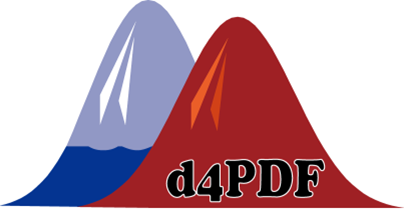Characteristics of d4PDF
(1) The d4PDF consists of outputs from global warming simulations by a global atmospheric model and from regional downscaling simulations covering the Japan area by a regional climate model with horizontal grid spacing of 60 km and 20 km, respectively. The climate of the latter half of the 20th century is simulated for 6000 years (3000 years for the Japan area), and the climates 2K and 4 K warmer than the pre-industrial climate are simulated for 3240 and 5400 years,respectivley, to see the effect of global warming.
(2) From large ensemble simulations, probabilistic future changes in extreme events are available directly without using any statistical models. In addition, the results enable the assessment of probabilistic change in localized severe events that have large uncertainty from internal variability.
(3) The simulation outputs are open to the public, which is intended to be utilized for impact assessment studies and adaptation planning for global warming. Plannings that are consistent between the problems and regions are expected by using the common dataset.
(4) Total data size is 3PB. The data is provided through the server by the Data Integration and Analysis System (DIAS).
Strategic Project with Special Support of JAMSTEC
The Earth Simulator supercomputer was used in this study as "Strategic Project with Special Support" of JAMSTEC. The study was also supported by the Program for Risk Information on Climate Change (SOUSEI), the Social Imprementation Program on Climate Change Adaptation Technoogy (SI-CAT), the Integrated Research Program for Advancing Climate Models (TOUGOU), and the Data Integration and Analysis System (DIAS), which all are sponsored by the Ministry of Education, Culture, Sports, Science and Technology of Japan.
